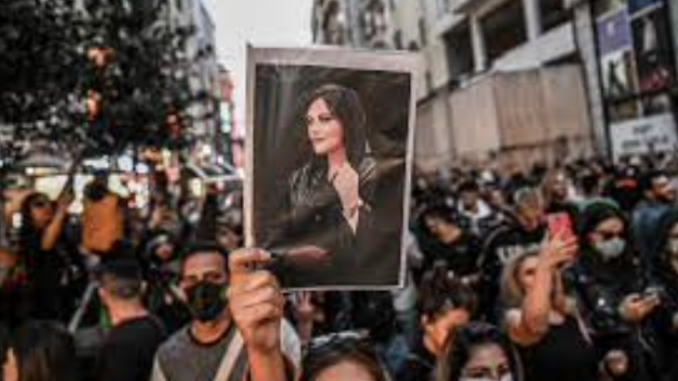
Sofia Williams
Managing Editor
On Sept. 13, 22-year-old Mahsa Amini was held in custody by Iran’s morality police for failing to comply with hijab requirements. After falling into a coma, Amini died on Sept. 16. While police say that the coma was caused by a heart attack Amini suffered while at the holding facility, witnesses say that Amini was severely beaten in the police van that transported her to the detainment center. Amini’s death, and the police response to the protests that stemmed from it, represent a threat to women’s rights that must be mitigated.
Protests have been taking place since Amini’s funeral on Sept. 17 to challenge the strict enforcement of hijab laws by the morality police. The morality police is a special branch of Iranian law enforcement that’s responsible for detaining women in “re-education centers” for failing to correctly wear hijabs or loose clothing. According to the Times of Israel, at least 92 people have been killed while protesting in Iran, as police have repeatedly opened fire into large crowds of demonstrators. In the demonstrations, women are burning their hijabs and chanting mantras such as “death to the dictator,” according to BBC News.
The Iranian government must take steps to reduce the cruelty of the morality police in order to protect the rights of women. Currently, the morality police have no uniform guidelines as to what attire necessitates their intervention nor the appropriate way to address such violations. According to Iranian scholar Roxane Farmanfarmaian in an interview with NPR News, the morality police are the main target of protests in Iran because they prevent women from exercising their rights. The repression of women in Iran is becoming more and more contested around the world as globalization causes the reach of human rights advocacy to expand.
Not only has the cruelty of the morality police sparked protests in Iran, but many Iranians believe that the strict rules under which the group operates should be reformed. A 2014 study by the Iranian Students’ News Agency showed that there has been a 15% increase in people who believe wearing a hijab should not be compulsory. When governments and law enforcement consistently turn a blind eye to public demands, bloodshed is imminent, which only serves to further anger the public and reflects poorly on the government.
While traditional garments such as hijabs and manteaus are valued aspects of Islamic culture in Iran, the religious values that mandate their use can still be respected in a manner that does not necessitate violence. According to an article published by the Faculty of Medicine of Tunisia in the Archives of Women’s Health, the Koran, or the Holy Book of Islam, does not state any justification for violence toward women. This demonstrates that Iran’s morality police do not have a religious basis for their acts of brutality toward women, showing that the rules that govern the group should be reformed to include a zero-tolerance policy for such acts.
The death of Mahsa Amini is one of many instances of cruelty perpetuated against women in Iran and in other countries with militant Islamic leadership. The first step toward mitigating violence against women in Iran is to pass reforms within oppressive government institutions such as the morality police. As demonstrations continue to occur in protest of the violence against Amini and other women, the Iranian government must act in order to maintain peace within its nation and others around the world.

Leave a Reply